20 Movie Dresses That Shaped The Film Industry
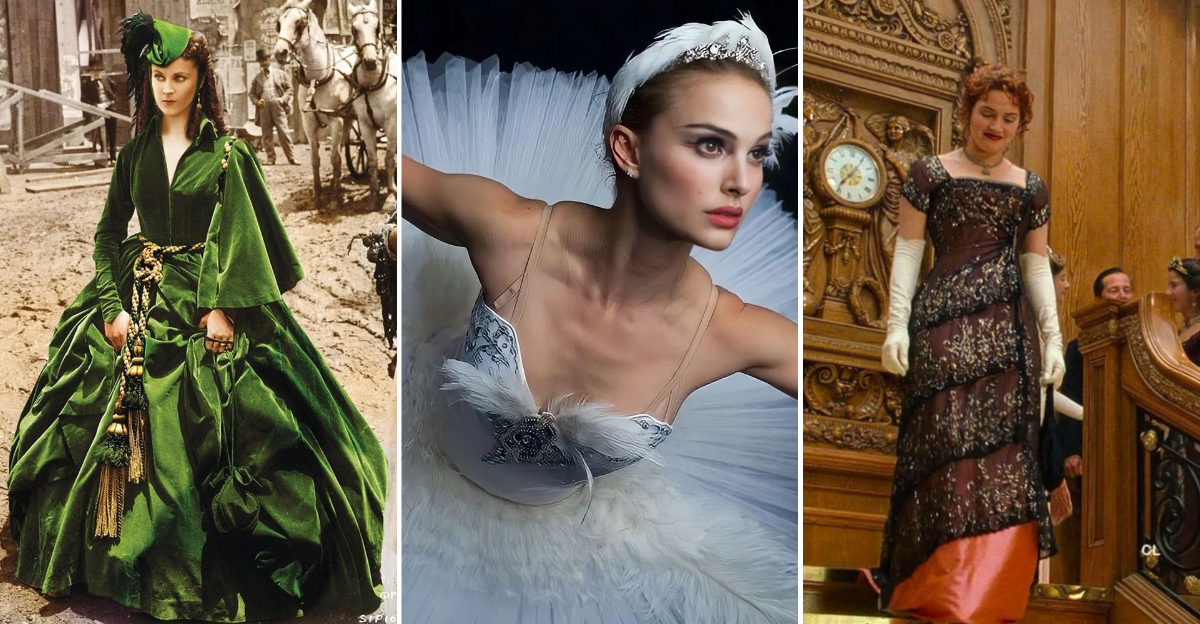
Movie dresses do more than just clothe actors – they tell stories, create moments, and sometimes change cinema forever.
When a costume becomes iconic, it transcends the film and enters our collective memory, influencing fashion and pop culture for generations.
These fabric marvels have the power to define characters, evoke emotions, and create those unforgettable movie moments we can’t stop talking about.
1. Audrey Hepburn’s Black Givenchy in Breakfast at Tiffany’s
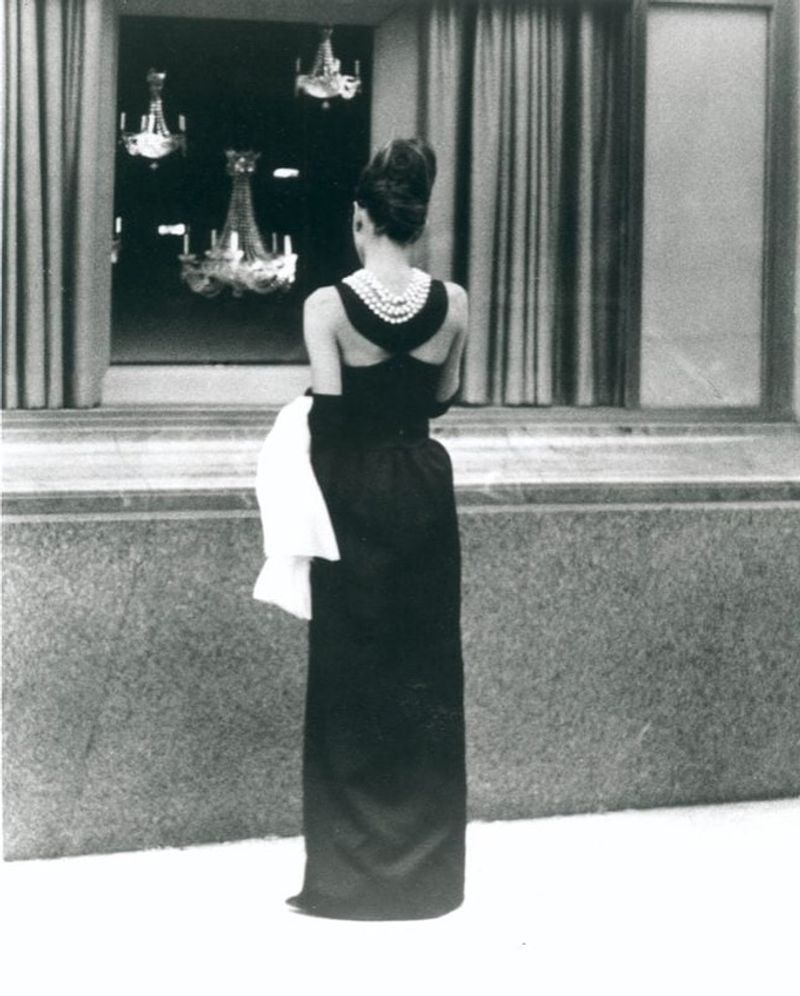
The moment Audrey stepped out of that taxi in her floor-length black Givenchy dress, pearls gleaming at her neck, cinema changed forever. This wasn’t just a dress – it was a revolution in how we viewed elegance on screen.
Designer Hubert de Givenchy created something deceptively simple yet impossibly sophisticated. The dress’s clean lines and timeless silhouette made it the ultimate little black dress, inspiring countless imitations in both film and fashion.
What’s remarkable is how this single garment defined not just Holly Golightly’s character but Hepburn’s entire career image. Sixty years later, people still reference this look as the pinnacle of cinematic style – proof that sometimes, the most powerful costume choices are also the simplest.
2. Marilyn Monroe’s White Halter Dress in The Seven Year Itch
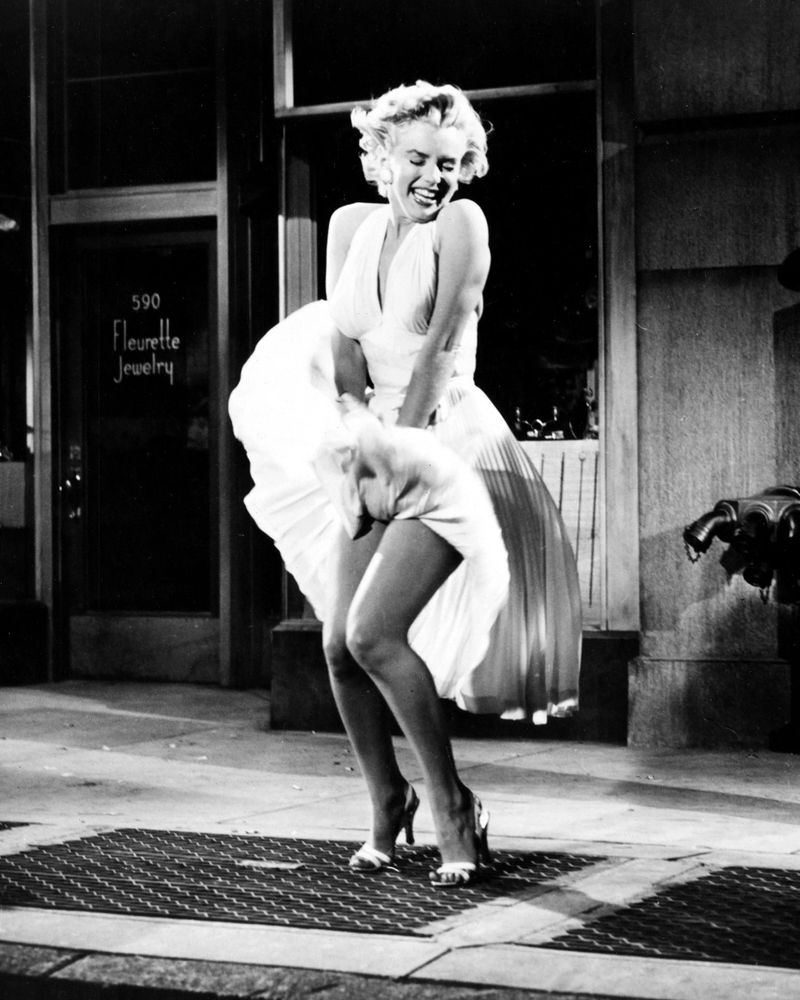
Standing over that subway grate, Marilyn’s ivory pleated dress billowing around her thighs created cinema’s most recognizable silhouette. The dress itself was surprisingly modest by today’s standards – a simple halter with a pleated skirt – but the way it moved became pure movie magic.
Designer William Travilla never imagined his creation would become such a cultural touchstone. The dress perfectly captured Monroe’s blend of innocence and sensuality, cementing her status as America’s ultimate sex symbol.
When that dress sold at auction for $4.6 million in 2011, it confirmed what movie fans already knew – this wasn’t just fabric and thread, but a piece of history that forever changed how sexuality was portrayed on screen. Its influence continues in everything from fashion to advertising.
3. Vivien Leigh’s Curtain Dress in Gone with the Wind
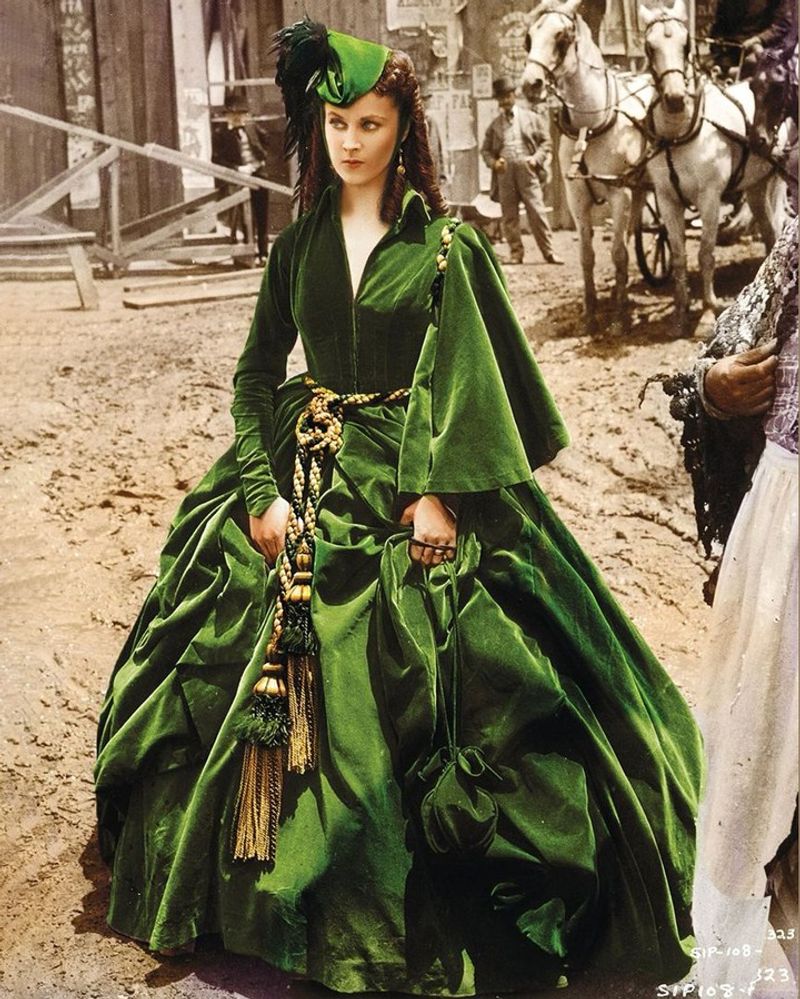
Nothing captures Scarlett O’Hara’s resourcefulness better than the emerald velvet dress she fashions from her mother’s curtains. This wasn’t just a costume – it was a character-defining moment that showed her determination to survive despite the Civil War’s devastation.
Designer Walter Plunkett created a dress that perfectly balanced desperation and dignity. The velvet curtain dress, with its dramatic tasseled belt, represented Scarlett’s refusal to surrender to poverty while showcasing her willingness to break social norms.
The dress became so iconic that the original now requires special preservation at the Harry Ransom Center. Its cultural impact was so strong that “wearing curtains” entered our vocabulary as shorthand for making something beautiful from whatever materials are available – the ultimate fashion statement about resilience.
4. Julia Roberts’ Red Opera Dress in Pretty Woman
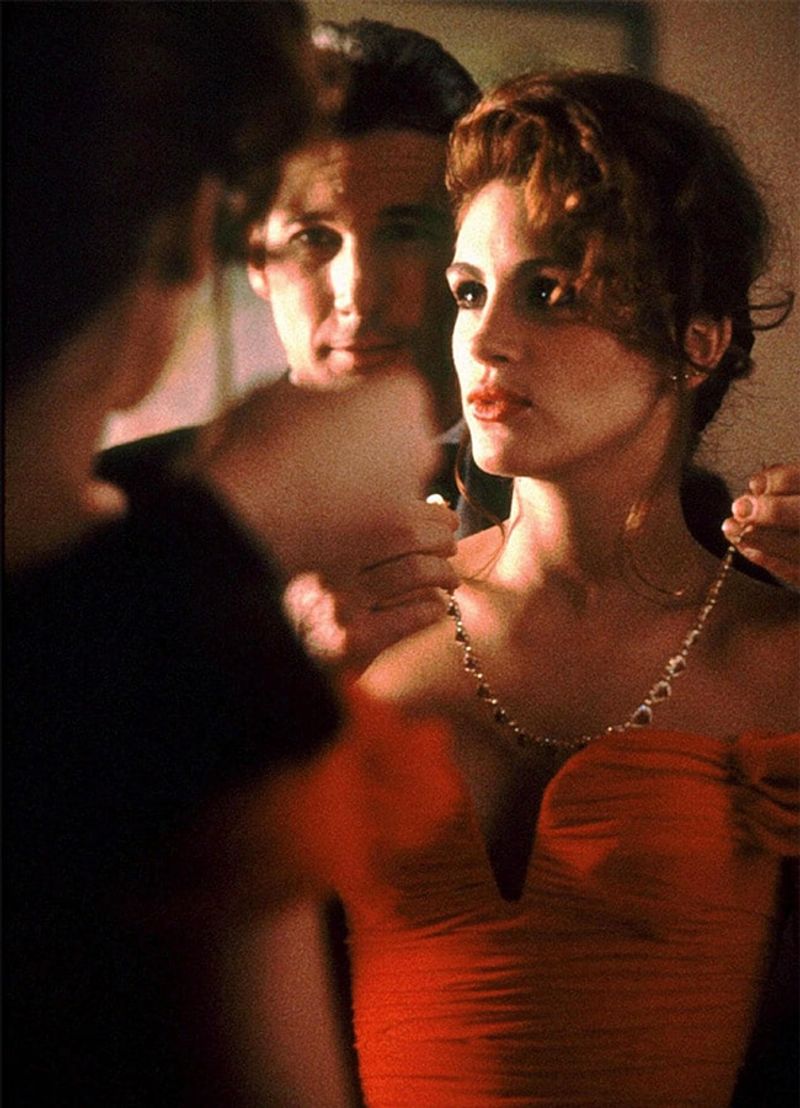
The transformation scene that launched a thousand makeover montages! When Julia Roberts appeared in that stunning off-shoulder red gown, it wasn’t just Vivian Ward evolving from streetwalker to sophisticate – it was Hollywood cementing the modern Cinderella story.
Costume designer Marilyn Vance deliberately chose this bold color and dramatic silhouette to represent Vivian’s newfound confidence. The dress itself became a character, telling the story of personal transformation through fabric and form.
What’s fascinating is how this single garment changed romantic comedies forever. After Pretty Woman, the dramatic dress reveal became an essential element in countless films. Even more significantly, it created a fashion moment so powerful that red opera gowns still carry the cultural nickname “Pretty Woman dress” three decades later.
5. Kate Winslet’s Blue Evening Gown in Titanic
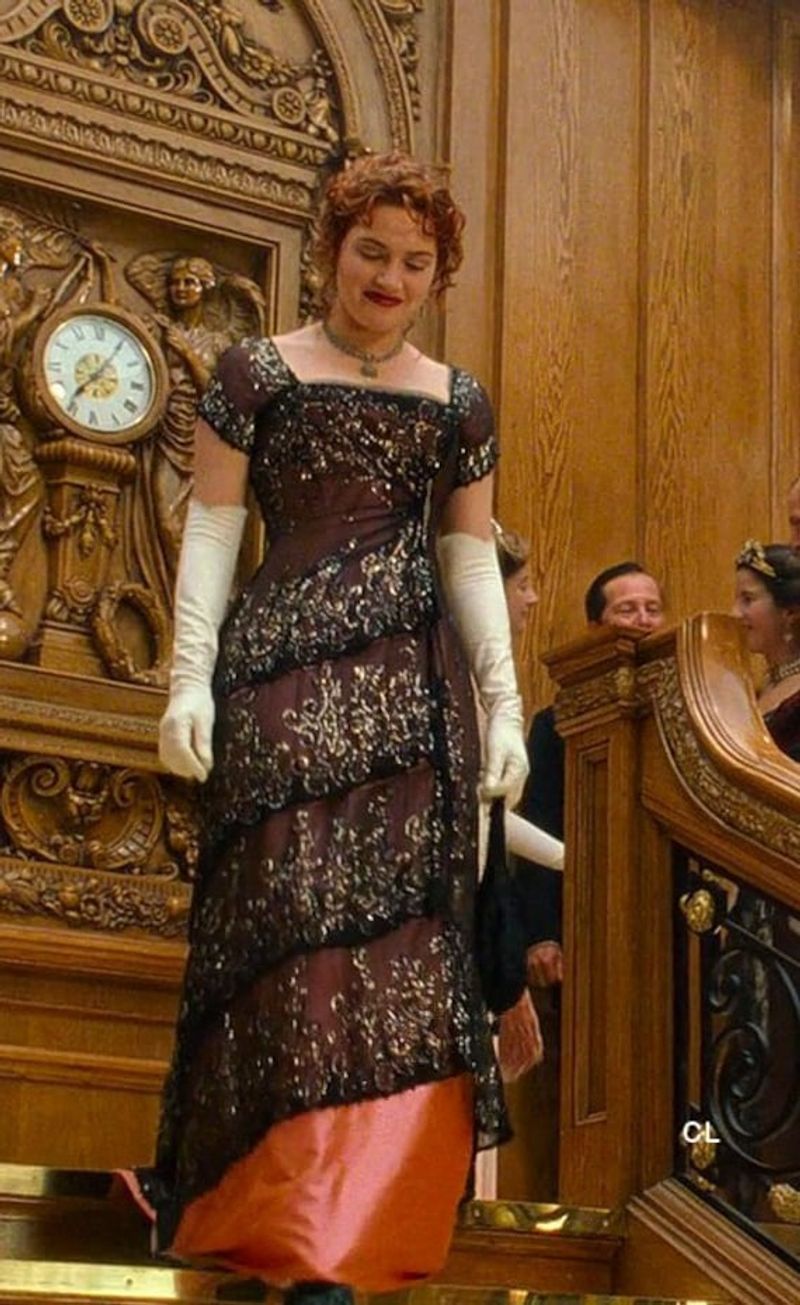
Rose DeWitt Bukater’s beaded blue evening dress wasn’t just beautiful – it was narrative genius. The moment she descended that grand staircase, the gown’s movement and shimmer captured perfectly what it meant to be young, wealthy, and trapped in 1912 society.
Designer Deborah Lynn Scott created a historically accurate masterpiece that somehow felt timeless. The dress’s intricate beadwork and flowing silhouette made it instantly recognizable, while its deep blue color symbolized Rose’s connection to the ocean that would change her life.
This gown accomplished something remarkable – it helped turn a historical disaster film into a romance for the ages. The image of Rose in her blue gown, hair perfectly coiffed, became as iconic as the ship itself, proving that sometimes the right costume can elevate an entire film to legendary status.
6. Dorothy’s Ruby Slippers in The Wizard of Oz
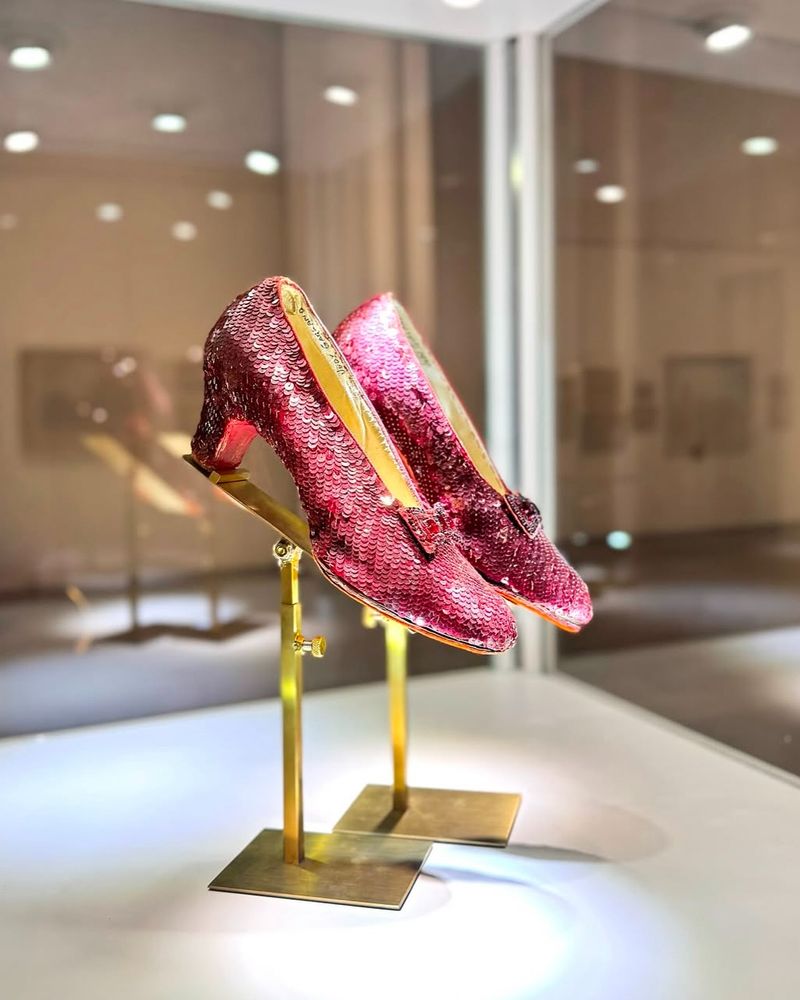
Those sparkling ruby slippers weren’t just footwear – they were the beating heart of cinema’s most beloved fantasy. Originally silver in L. Frank Baum’s book, MGM’s costume department made them ruby red specifically to showcase the power of Technicolor film.
Designer Gilbert Adrian created something magical by hand-sequining simple pumps. The contrast of those dazzling shoes against Dorothy’s simple blue gingham dress created an unforgettable visual that symbolized the film’s central theme: the extraordinary hiding within the ordinary.
These shoes transcended their film to become perhaps the most recognizable costume piece in cinema history. Now preserved in the Smithsonian, they represent not just a movie but the transformative power of film itself. Their cultural impact is so profound that the phrase “there’s no place like home” remains inseparable from the image of those glittering slippers.
7. Elizabeth Taylor’s Gold Snake Dress in Cleopatra
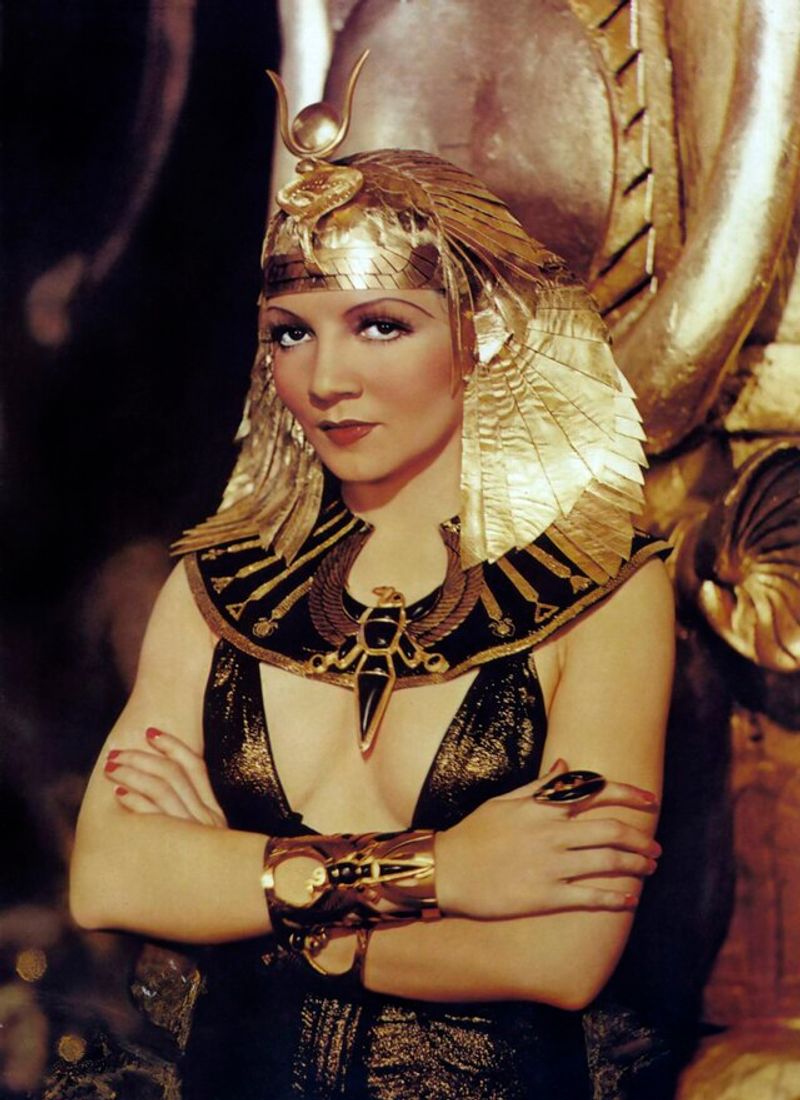
Taylor’s entrance into Rome as Cleopatra remains one of cinema’s most spectacular moments, largely due to that gold lamé gown with its metal snake breastplate. This wasn’t just a costume – it was a declaration that Hollywood had never seen anything like this before.
Designer Irene Sharaff created over 65 costumes for Taylor, but this one captured the perfect blend of historical inspiration and pure Hollywood fantasy. The dress cost a fortune, contributing to Cleopatra becoming the most expensive film ever made at that time.
Beyond its visual impact, this costume changed how historical figures were portrayed on screen. It prioritized dramatic effect over strict historical accuracy, establishing a new approach to period films that continues today. The dress became so iconic that it influenced fashion trends throughout the 1960s, bringing Egyptian-inspired designs into mainstream style.
8. Nicole Kidman’s Sparkling Satine Costume in Moulin Rouge!
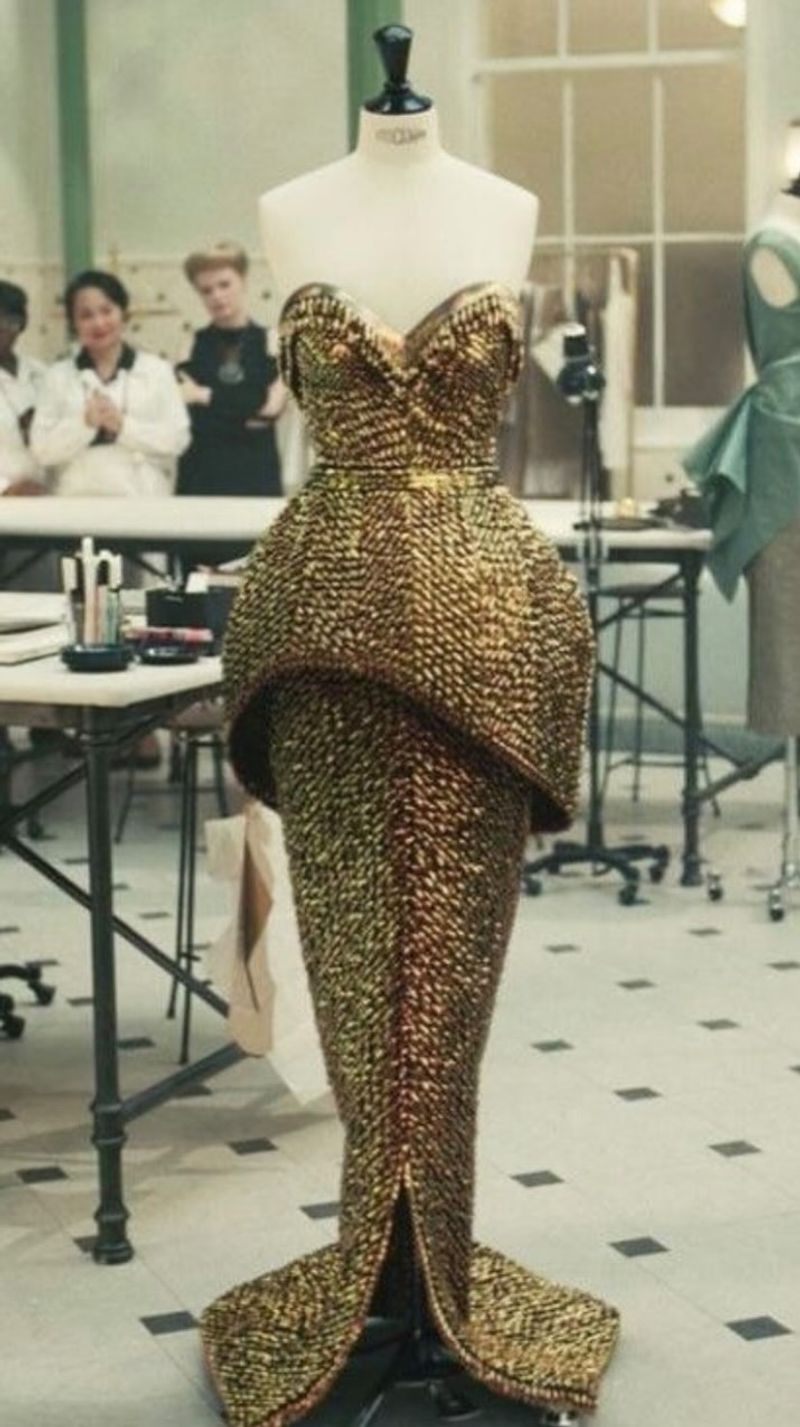
The moment Nicole Kidman descended from the ceiling on her trapeze, draped in crystals and diamonds, Baz Luhrmann’s vision of spectacular spectacle burst into vibrant life. This wasn’t just a showgirl costume – it was the physical embodiment of Luhrmann’s entire aesthetic approach.
Costume designer Catherine Martin created a masterpiece that blended historical accuracy with theatrical fantasy. The red and diamond-encrusted corset outfit perfectly balanced period inspiration with modern sensibilities, helping to establish the film’s unique visual language.
This costume did something remarkable – it helped legitimize the modern movie musical. By creating a look so memorable and visually striking, it announced that musicals could be relevant, sexy, and artistically significant in the 21st century. The costume’s influence continues in everything from stage productions to music videos.
9. Keira Knightley’s Green Evening Dress in Atonement
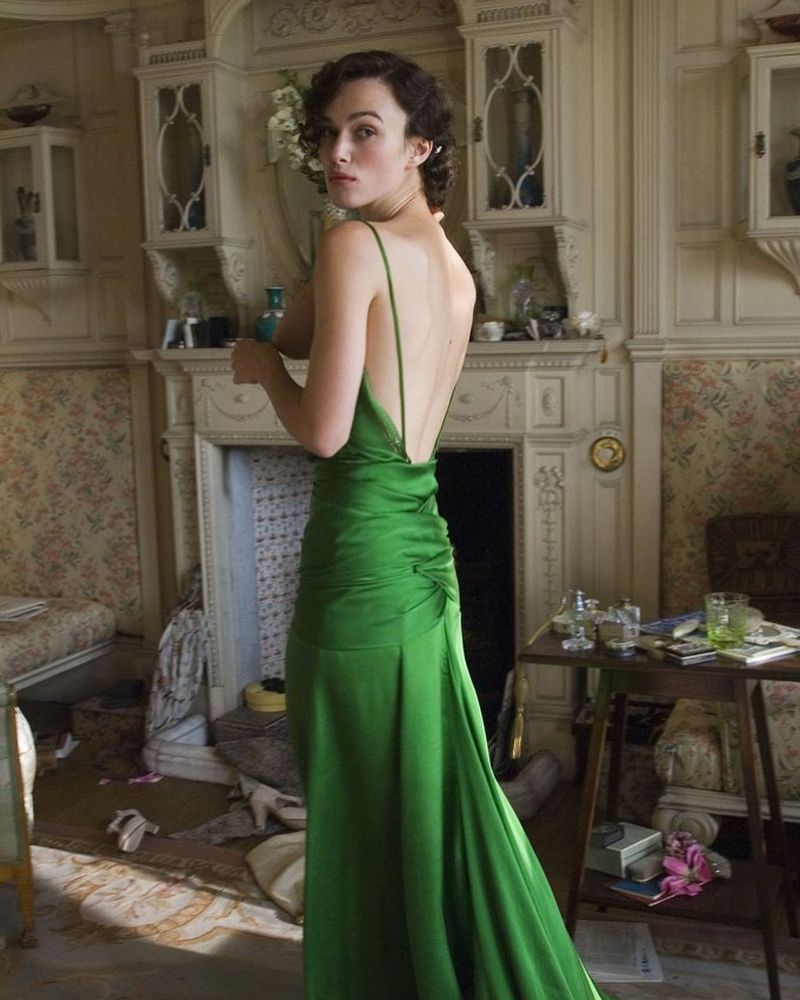
That emerald silk dress clung to Keira Knightley like a second skin, creating one of cinema’s most visually arresting love stories. The dress wasn’t just beautiful – it was narrative genius, its revealing cut and rich color symbolizing both forbidden desire and the character’s eventual destruction.
Designer Jacqueline Durran created something that felt both period-appropriate and startlingly modern. The dress’s flowing back and structured front perfectly captured the film’s central tension between restraint and passion.
What made this costume truly special was how central it became to the film’s marketing and identity. The image of Knightley in that green dress became more recognizable than any other aspect of the film, proving that sometimes a single garment can become the visual shorthand for an entire movie. Fashion designers immediately began creating emerald evening gowns inspired by this cinematic moment.
10. Alicia Silverstone’s Yellow Plaid Outfit in Clueless
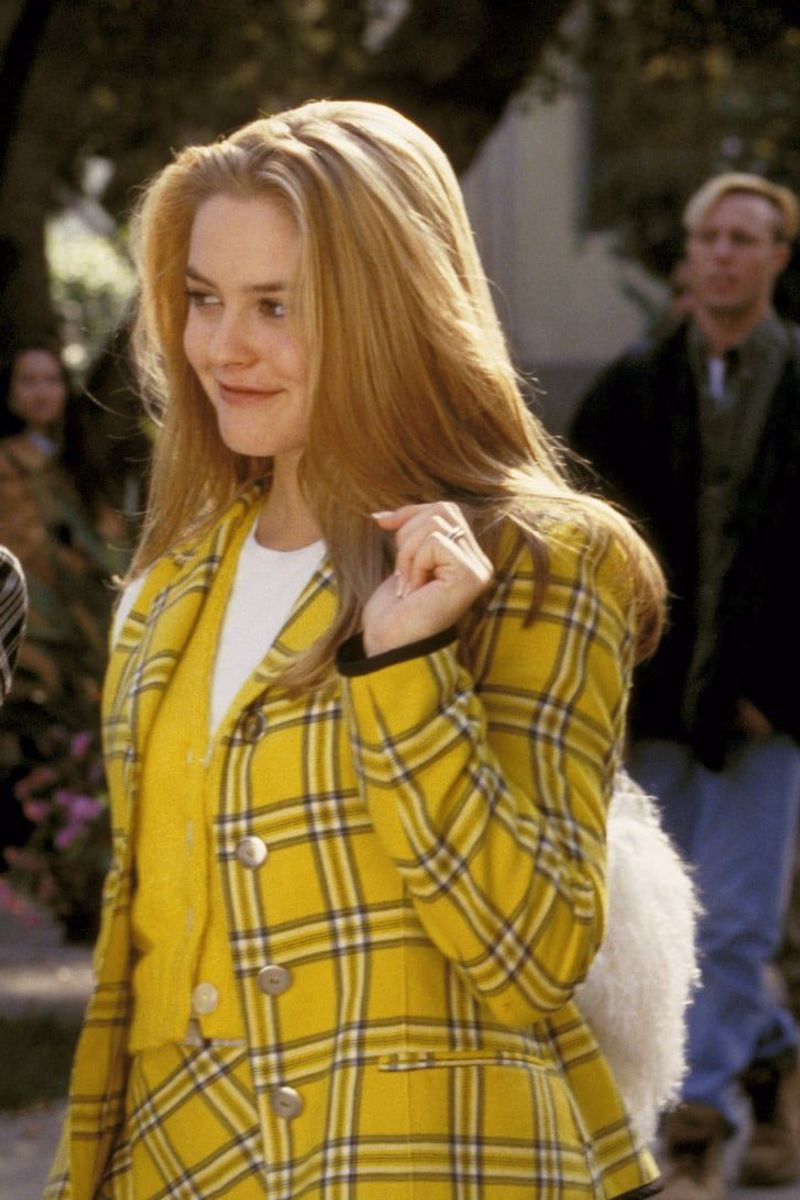
When Cher Horowitz strutted through her high school hallway in that yellow plaid skirt suit, she wasn’t just making a fashion statement – she was changing how an entire generation dressed. This wasn’t high fashion by design, but its cultural impact was nothing short of revolutionary.
Costume designer Mona May created something that perfectly captured mid-90s prep with a twist. The outfit’s bright yellow and black pattern, paired with knee-high socks, became instantly recognizable shorthand for the film’s unique blend of privilege, style, and teen spirit.
This single costume spawned countless imitations, bringing plaid miniskirts back into fashion and influencing everything from runway collections to fast fashion. Twenty-five years later, the “Clueless plaid” remains immediately identifiable, proving that sometimes the most influential movie costumes aren’t elaborate gowns but everyday outfits that capture a cultural moment perfectly.
11. Grace Kelly’s Blue Chiffon Gown in To Catch a Thief
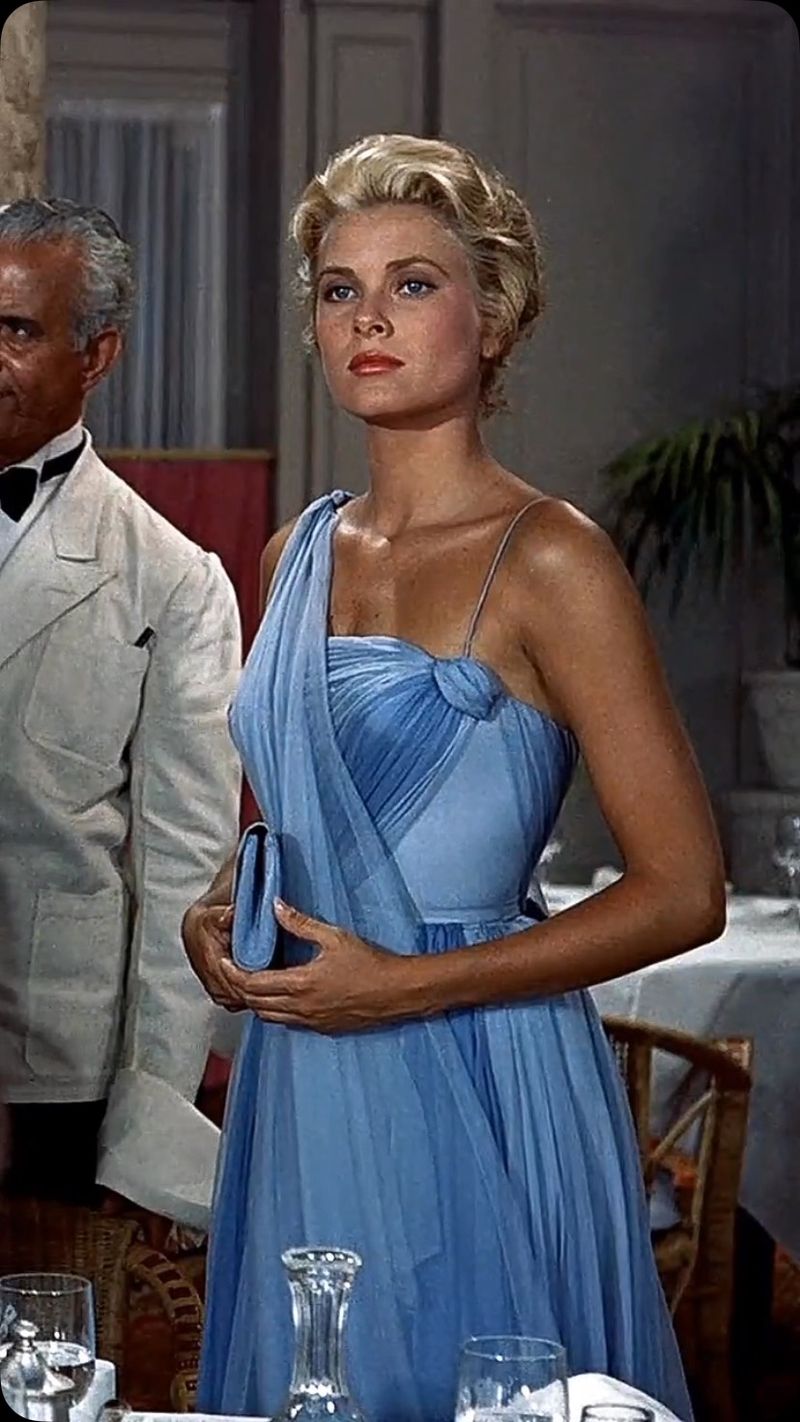
When Grace Kelly glided onto screen in that ice-blue chiffon masterpiece, Hitchcock created one of cinema’s most perfect marriages of actress, costume, and setting. Against the backdrop of the French Riviera, the gown’s floating layers mirrored both the Mediterranean waves and Kelly’s cool elegance.
Designer Edith Head, Hollywood’s most celebrated costumer, crafted a dress that perfectly balanced simplicity and sophistication. Its strapless bodice and flowing skirt created a silhouette that seemed to float around Kelly, emphasizing her natural grace.
The gown’s cultural impact extended far beyond the film. It influenced wedding dress designs for decades and foreshadowed Kelly’s real-life transformation into Princess of Monaco just a year after the film’s release. In a strange case of life imitating art, this costume helped establish the “princess aesthetic” that would define both fashion and fairy tales for generations.
12. Natalie Portman’s Black Swan Costume in Black Swan
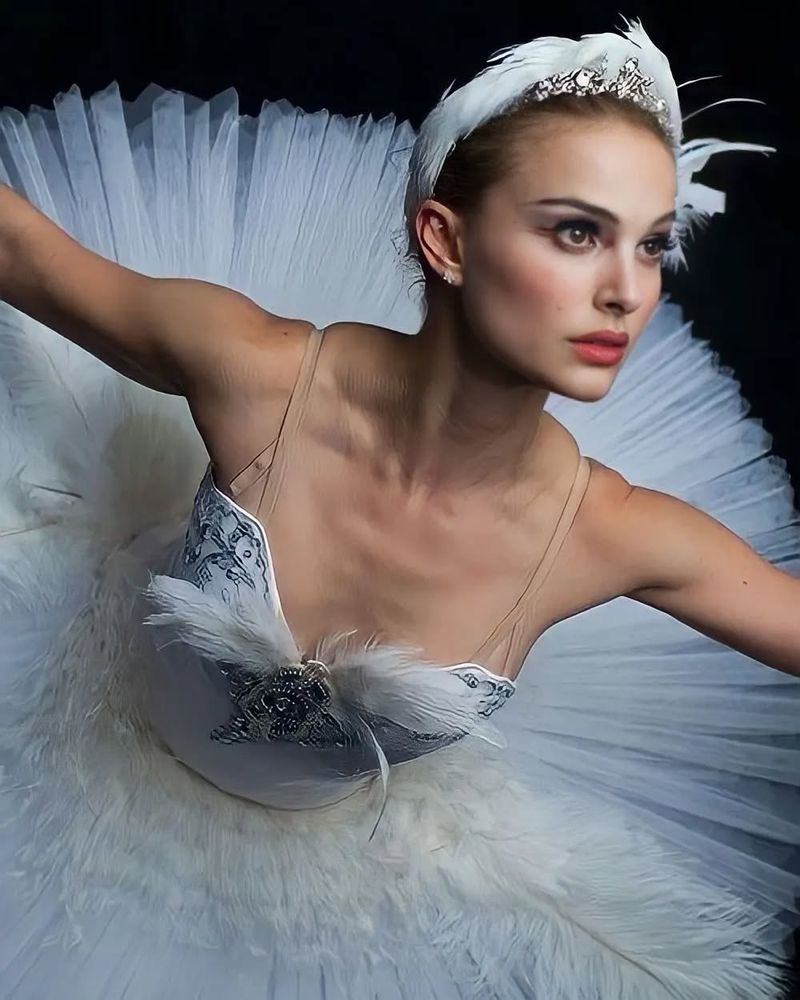
The transformation from white swan to black wasn’t just a costume change – it was the visual manifestation of a psychological breakdown. Portman’s black tutu, with its razor-sharp feathers and structural bodice, captured the darkness consuming her character from within.
Designers Amy Westcott and Rodarte created something that honored ballet tradition while adding sinister, otherworldly elements. The costume’s progression throughout the film – gradually incorporating more black elements – brilliantly tracked Nina’s psychological deterioration.
This costume did something remarkable – it brought ballet fashion into mainstream consciousness. After the film’s release, fashion runways filled with feathers, tulle, and ballet-inspired pieces. More importantly, it demonstrated how costume design could physically represent mental illness on screen, influencing countless films that followed in using clothing as visual metaphor for psychological states.
13. Sharon Stone’s White Interrogation Dress in Basic Instinct
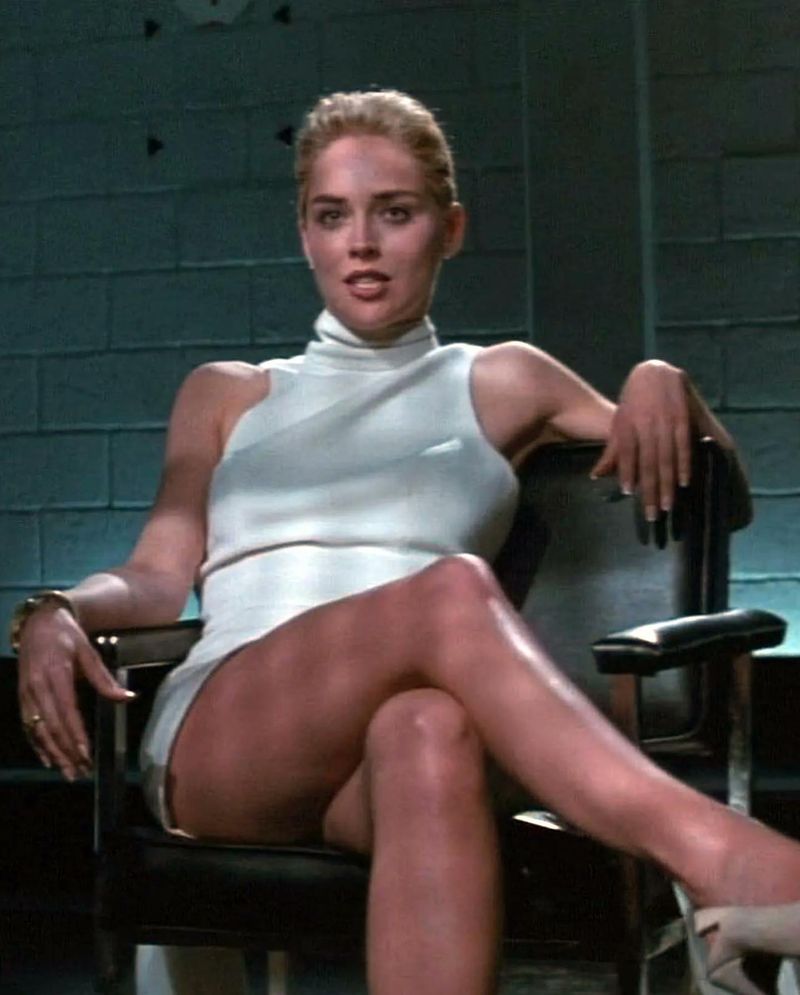
Sometimes a movie dress becomes iconic not for its elaborate design but for what it reveals. Stone’s simple white mini-dress created cinema’s most notorious crossing and uncrossing of legs, challenging censorship boundaries and changing how sexuality was portrayed in mainstream films.
Designer Ellen Mirojnick chose this understated dress deliberately – its stark simplicity contrasted perfectly with the character’s complex, dangerous sexuality. The high-necked, long-sleeved silhouette appeared modest until that interrogation scene revealed otherwise.
This dress sparked endless controversy while demonstrating the power of costume to create cultural conversation. It shifted power dynamics in thriller films, showing how female sexuality could be weaponized on screen. The dress became so infamous that Stone herself has spoken about its unexpected impact on her career and public perception – proof that sometimes the most influential costumes are the most seemingly simple.
14. Jennifer Lawrence’s Wedding Gown in The Hunger Games: Catching Fire
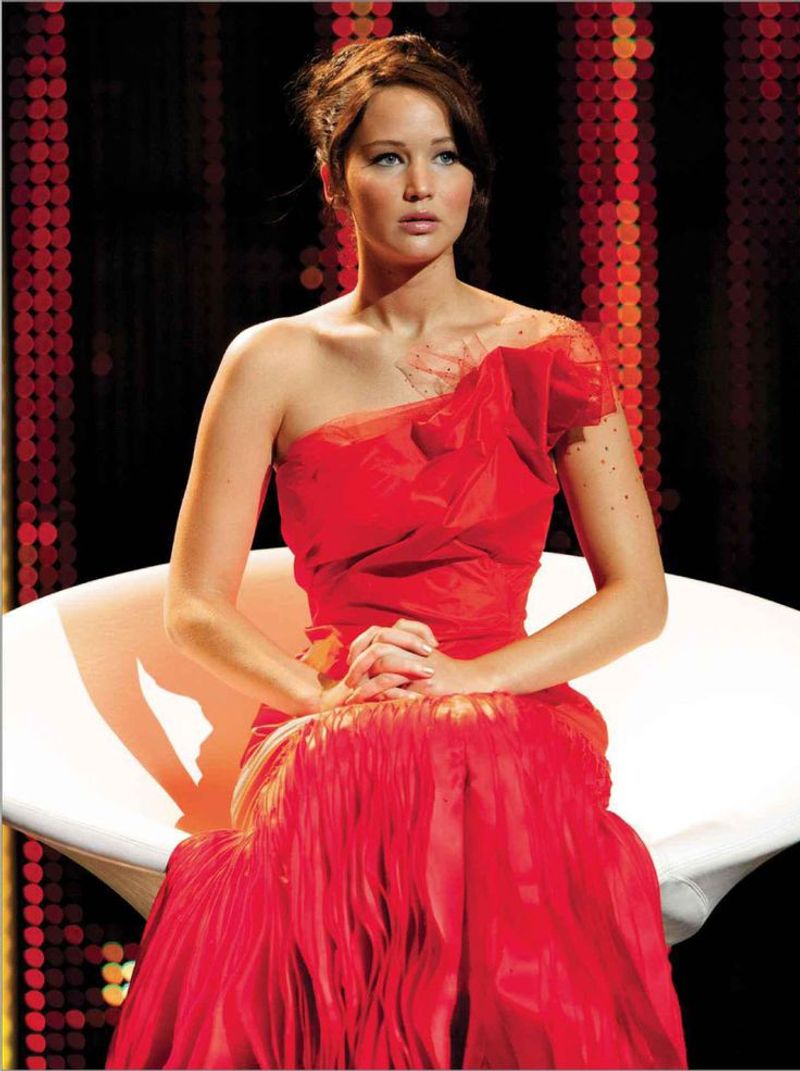
When Katniss Everdeen twirled and her white wedding dress transformed into a mockingjay, it wasn’t just a stunning visual – it was political rebellion wrapped in tulle and feathers. This wasn’t just a costume change but a narrative turning point that captured the entire trilogy’s themes.
Designer Trish Summerville created something technically revolutionary. The dress’s transformation from oppressive Capitol fashion to symbol of resistance required innovative construction that pushed the boundaries of costume technology.
This dress accomplished something rare in action films – it made fashion integral to the plot rather than decorative. The gown’s transformation became a perfect visual metaphor for Katniss’s evolution from pawn to revolutionary. Its influence extended beyond cinema, inspiring numerous “transformation dresses” on fashion runways and demonstrating how costume design could incorporate special effects to advance storytelling in new ways.
15. Emma Watson’s Yellow Ballgown in Beauty and the Beast
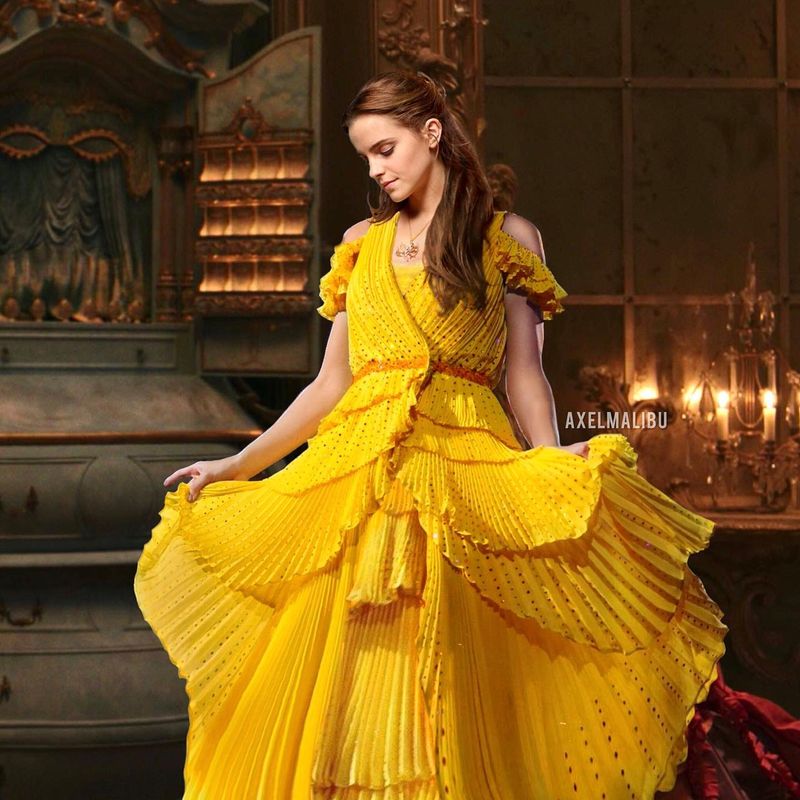
Reimagining Disney’s most beloved animated dress for live-action presented a monumental challenge. How do you honor a cartoon icon while creating something that moves naturally on a real human body? Watson’s golden gown managed this balancing act perfectly.
Designer Jacqueline Durran crafted a dress that maintained the animated version’s silhouette while adding subtle details that reflected Belle’s practical character. The dress incorporated subtle gold leaf patterns and omitted the restrictive corset at Watson’s request, making it both beautiful and functional.
This costume demonstrated the unique challenges of translating animation to live-action. Its success helped launch Disney’s entire live-action remake strategy, proving that beloved animated designs could be respectfully updated for modern audiences. The dress’s construction also reflected changing attitudes about princess costumes, emphasizing movement and comfort alongside traditional beauty.
16. Diane Keaton’s Annie Hall Menswear in Annie Hall
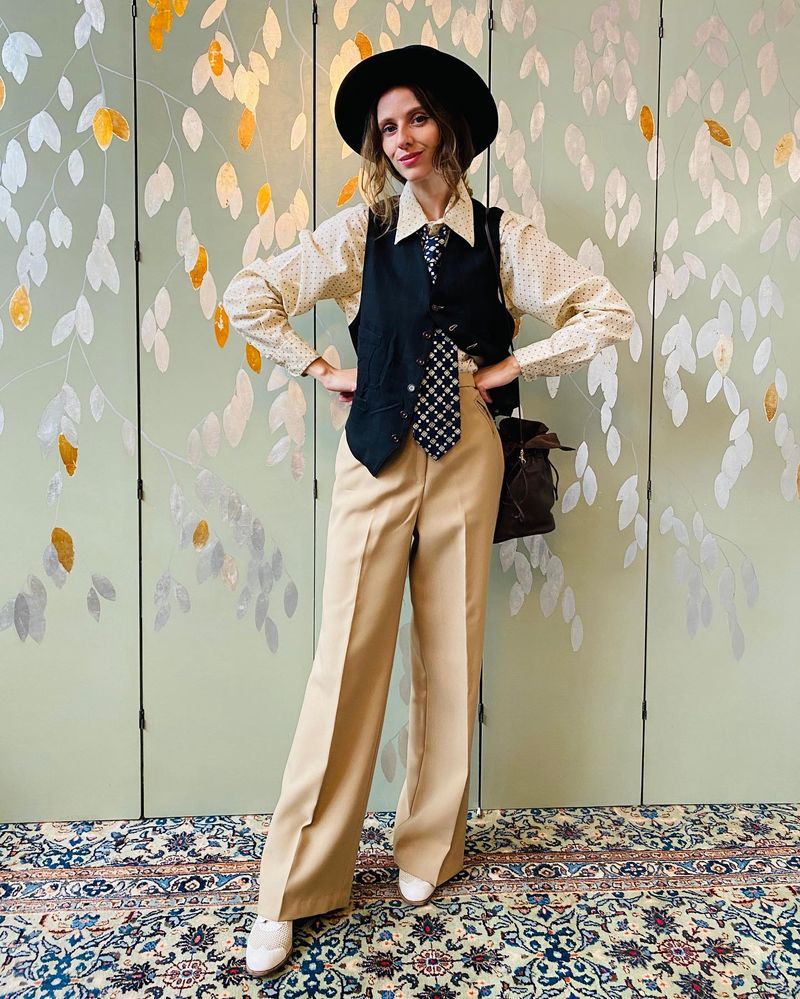
Sometimes the most revolutionary movie “dress” isn’t a dress at all. Keaton’s masculine-inspired wardrobe – those oversized shirts, vests, ties, and baggy pants – wasn’t just quirky character development but a fashion revolution that challenged gender norms in both cinema and society.
What made this costume work so brilliantly was that it wasn’t really a costume at all. Keaton largely wore her own clothes, bringing authentic personal style to the screen at a time when most female characters wore carefully constructed looks.
The cultural impact was immediate and lasting. “Annie Hall style” launched a worldwide fashion trend that influenced everything from runway collections to everyday office wear. More importantly, it helped normalize the idea that women could borrow from menswear without sacrificing femininity. This wasn’t just costume design – it was a quiet feminist statement that continues to influence how women dress decades later.
17. Uma Thurman’s Yellow Jumpsuit in Kill Bill
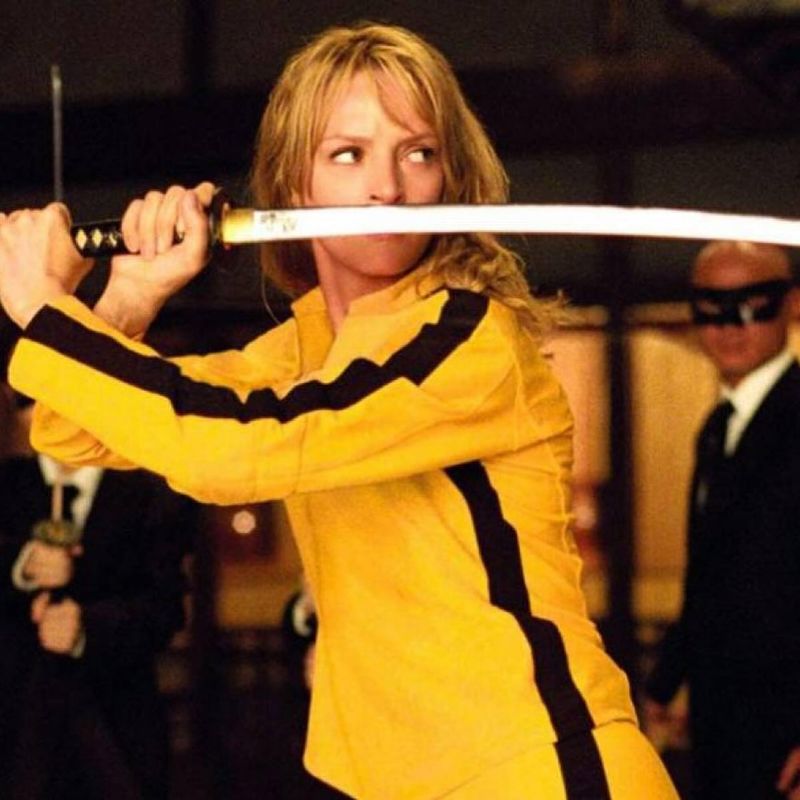
The Bride’s yellow jumpsuit wasn’t just a costume – it was a declaration of war. Tarantino deliberately chose this bright, eye-catching color as a visual tribute to Bruce Lee while ensuring his revenge-seeking protagonist would stand out in every blood-soaked frame.
Designer Catherine Marie Thomas created something deceptively simple that became instantly iconic. The jumpsuit’s practical design emphasized that this was a functional killing outfit, not a glamorous one, while its bright yellow color created striking visual contrast with the film’s abundant red blood.
This costume changed action cinema by helping legitimize female-led action films. The yellow jumpsuit became visual shorthand for female vengeance, inspiring countless Halloween costumes and fashion collections. More significantly, it demonstrated that female action heroes didn’t need to be sexualized to be compelling – functionality could be iconic in itself.
18. Judy Garland’s Gingham Dress in The Wizard of Oz
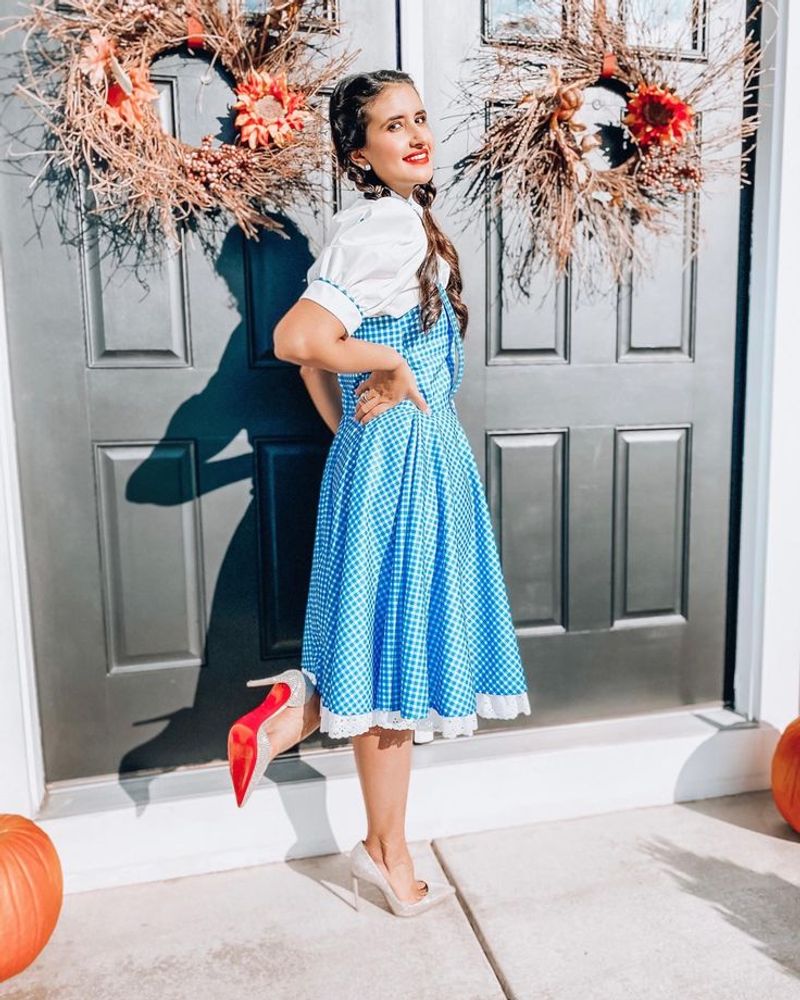
Before the ruby slippers stole the show, Dorothy’s blue gingham dress established the character’s innocent Kansas roots. This wasn’t high fashion – it was deliberately simple farm girl attire that made her extraordinary journey even more remarkable by contrast.
Designer Adrian created something that perfectly balanced practicality with storybook charm. The dress’s simple pattern and modest cut emphasized Dorothy’s youth and innocence while providing the perfect backdrop for those magical slippers.
This costume became the template for countless “everyday hero” characters in film. Its cultural significance lies in how it established that protagonists don’t need elaborate costumes to be memorable – sometimes simple, relatable clothing creates the strongest connection with audiences.
The blue gingham pattern remains so associated with the character that it’s now practically impossible to see this fabric pattern without thinking of Dorothy and her journey to Oz.
19. Carrie Fisher’s White Dress and Buns in Star Wars
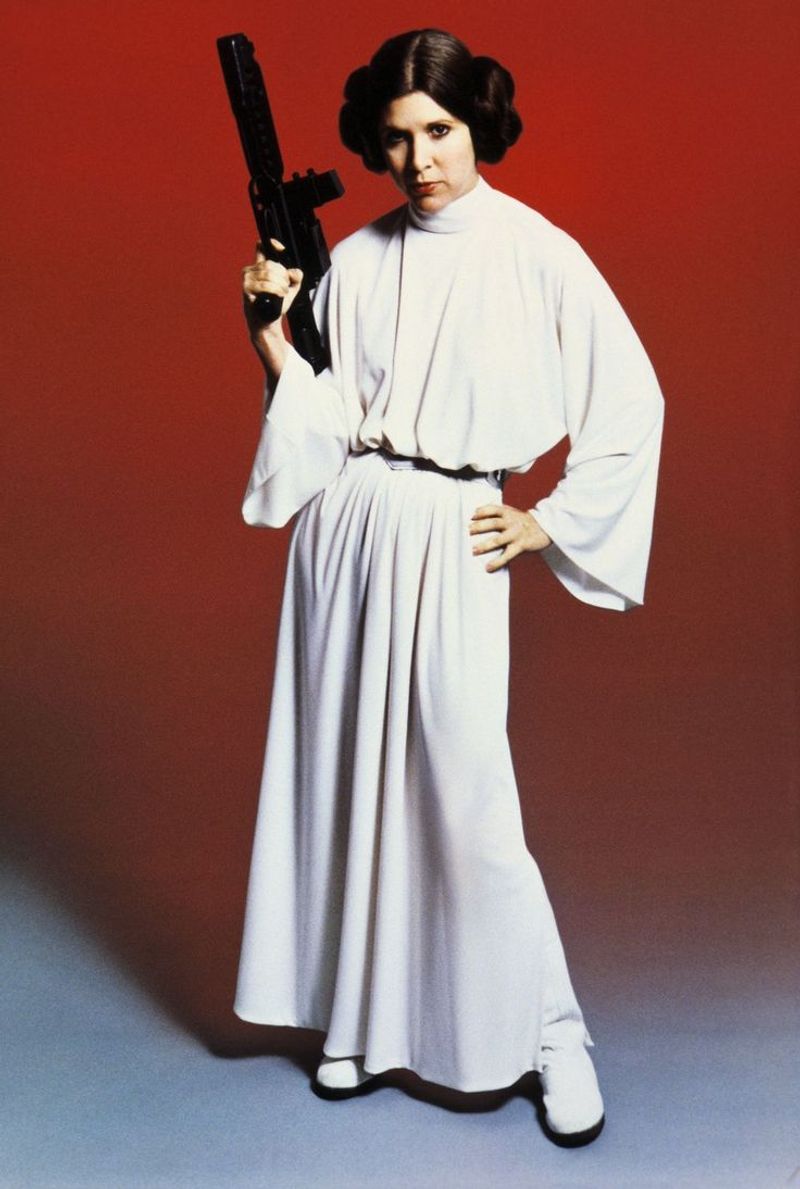
Princess Leia’s flowing white gown and side buns created science fiction’s most recognizable silhouette. This wasn’t just space fashion – it was a brilliant character statement that managed to feel both futuristic and timeless simultaneously.
Designer John Mollo created something revolutionary by looking backward. The dress combined elements of medieval European design, Asian influences, and 1970s minimalism to create something that defied easy categorization or dating.
This costume changed how female characters in science fiction were presented. Before Leia, women in space were often sexualized or relegated to minor roles. Her practical, regal white dress established her authority while her distinctive hairstyle created an instantly recognizable visual identity.
The costume became so iconic that “Leia buns” and the white dress remain immediately identifiable cultural shorthand for both the character and the entire Star Wars franchise.
20. Cate Blanchett’s Golden Armor in Elizabeth: The Golden Age
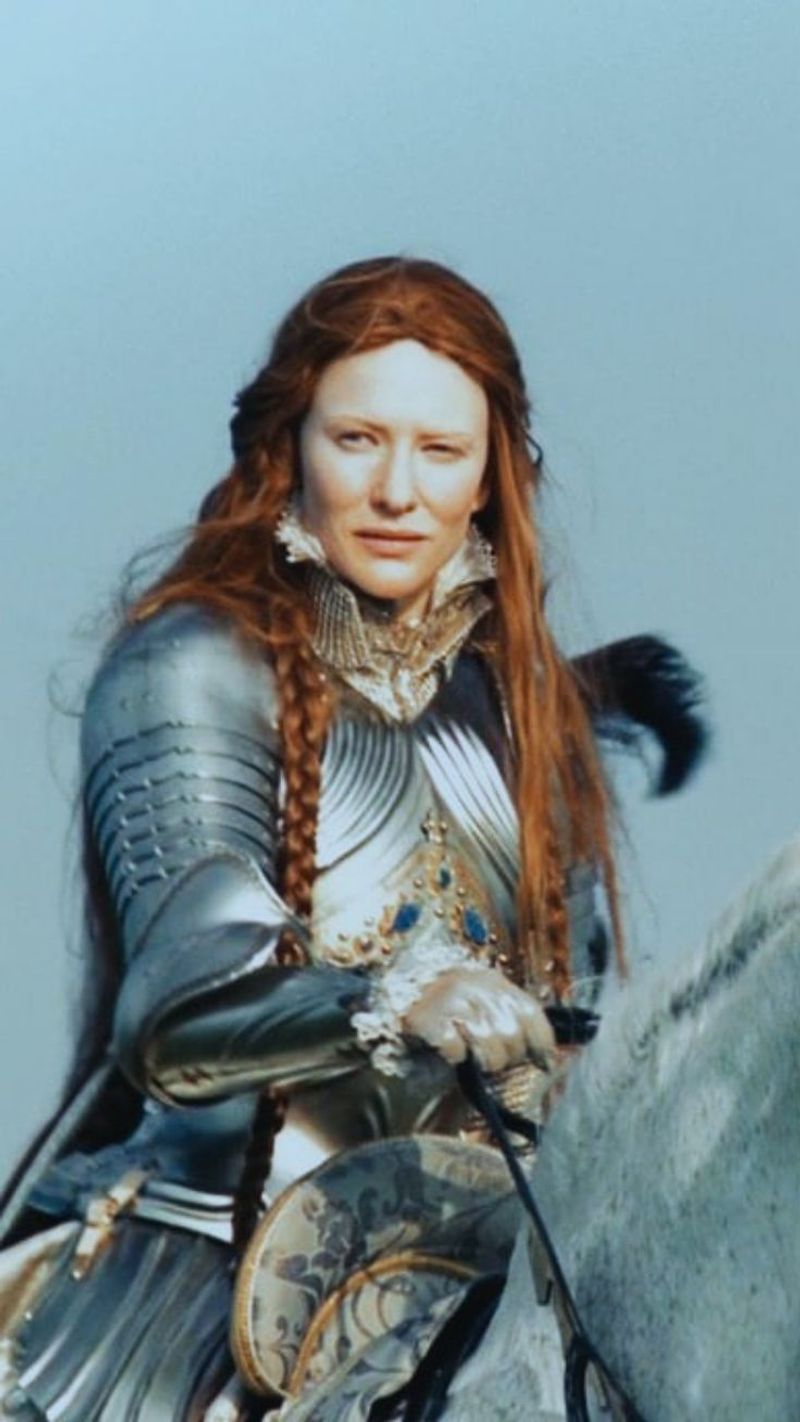
When Elizabeth I rode to address her troops at Tilbury, her gleaming golden armor wasn’t just a costume – it was a visual metaphor for the entire film. This wasn’t historical accuracy but symbolic storytelling through fabric and form.
Designer Alexandra Byrne created a masterpiece of both design and character development. The ornate golden breastplate, with its feminine curves yet militant purpose, perfectly captured Elizabeth’s duality as both woman and warrior-queen.
This costume represented a turning point in how period films approach historical accuracy. Rather than striving for documentary-like precision, Byrne prioritized emotional and thematic truth, creating costumes that conveyed character psychology rather than historical literalism.
The golden armor became one of cinema’s most striking visual representations of female power, influencing how strong women leaders would be costumed in historical films for years to come.
